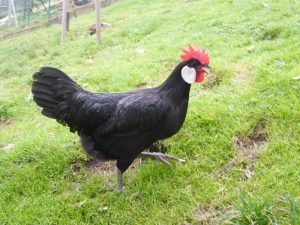Cochin Chicken – Characteristics, Origin, Breed Info and Lifespan

If you have an interest in learning about the Cochin chicken breed, then continue reading this article till the end.
In this article, you will learn about the origin and history of the Cochin chickens, their characteristics and why this breed of chicken is great for you.
Also, you will learn about the various challenges facing this chicken that may make them a poor decision for you to take.
So, if you are ready to follow a proper guide that will help you to choose the best chicken breed for your backyard poultry or for commercial purposes, then let’s get started.
What is a Cochin Chicken?
The Cochin Chickens are fancy poultry birds, with plumpy bodies.
They are very large-sized birds with feathers full and thick even onto the legs.
Usually, they are friendly birds whose appearance makes them more loving.
Its large size and striking appearance made it a huge attraction for poultry breeding.
In this article, we bring you all you need to know about the Cochin Chicken.
Also, information on how to care for them, the different varieties and how to keep them are discussed.
At the end of this piece, you will get to decide if you will keep them as part of the birds I’m your backyard.
Or as ornamental birds of art for exhibitions.
Ready?
Welcome aboard, farmer!!!!
What is the Origin and History of Cochin Chickens?
Like the Brahma chicken, we can trace the origin of Cochin Chickens in China in the 1840s.
Initially, they were first known as “Shanghai Birds,” which was in resonance with its origination.
Just when many thought that was the perfect name, its name was further changed to the “Cochin-Chinas”
But today, it bears the name “Cochin”.
In the late 1840s and early 1850s, the Cochin Chicken made its entrance into Europe and North America.
At that time, many related it to the Brahma chicken.
This is because the Cochin Chicken has a lot of similarities with the Brahma chicken breed.
Of which one was that the Cochin Chickens were part of the reason for “Hen Fever” along with the Brahma breed.
The Hen Fever was referred to as a crazy over the breed of chickens in the US and England around the mid-1800s.
Following its welcome in Europe, the then Cochin breed was further developed in the U.S.
This brought about the different varieties of the Cochin Chicken Breed.
Which includes buff, black, cinnamon, grouse, lemon, partridge, silver buff, silver cinnamon, and white.
Four additional varieties were added years later. They include the birchen, Columbian, mottled, and red.
In 1874, the Cochin was recognized by the APA as a breed of chicken.
After which it was included in the first edition of the Standard of Excellence of the American Poultry Association.

What are the Characteristics of Cochin Chickens?
All Chicken breed have their peculiarity and how you can identify them.
If you were to see a Cochin Chicken, will you know?
Let’s say you already know what it looks like. What features make it outstanding from other birds?
I’m sure you’d like to know.
Here are some features that set the Cochin Chicken apart from other birds;
1. The Cochins have a Heart-Shaped Body Structure.
From the side, they look like a heart-shaped fluff ball.
Its breasts are full and shallow.
2. They are Broody and Large Birds
The Cochin breeds are fluffy chickens. This makes them really soft and light in weight.
Their large size is one of the reasons many farmers add them to their flick of Chickens.
3. The Cochin Birds have Very Thick Feathers
This is one of the most distinctive features of the Cochin breed.
They have excessive thick plumage that covers their leg and foot.
Most say they are feathered to a fault. However, this fluffiness makes them a big attraction.
With these natural thick feathers, the Cochin Chickens are well protected in winter.
Also, this makes them very resistant to cold.
4. They have Single Combs
Of course, the Cochins are single Combed birds. Usually, their combs are red in colour.
5. Cochins have Slow plumage
Usually, their feather formation takes some time.
Therefore, you can see them bare while growing till their feathers start growing.
6. Cochins are not High Flyers
A high fenced pen is not quite necessary. Reason is that the Cochins are poor flyers.
You can attribute this to how large they are.
Most farmers find it difficult to lift these hefty chickens.
7. Generally, the Cochin Chicken is Not Noisy.
If you’re looking for a bird to add to your flock that wouldn’t add to the noise already, then the Cochins are your best bet.
Naturally, they have a calm disposition. That makes them do well in closed quarters.
8. They Can be Used to Hatch Eggs of Turkeys and Ducks
Just in case you have turkeys as well, the Cochin Chickens are not just good sitters of their own eggs.
They can help you sit for your ducks and turkeys as well.
9. Cochins are Good Sitters and Mothers
As earlier stated, they can mother and hatch eggs not theirs.
And they take care of them really good after hatching.
10. They are Mostly Ornamental Birds
What this means is that, unlike the Plymouth chicken or Sussex chicken, the Cochins are mostly bred for exhibition.
You know that kinda bird is bred and displayed for its beauty and gorgeousness.
That’s the Cochin Chicken breed.
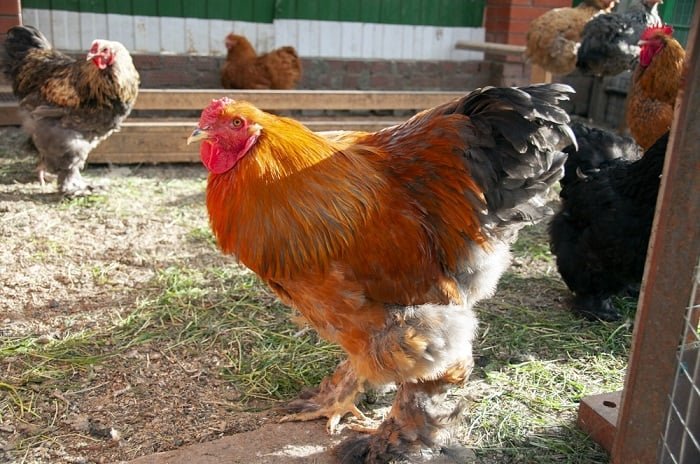
Table Summarizing the Cochin Breed Information
| Skin colour | Yellow |
| Egg colour | Brown or Tinted |
| Comb type | Single |
| Setter/Broody | Yes |
| Especially Docile | Yes |
| Use | Ornamental |
| Cold Hardiness | Hardy in winter. Needs Attention During summer. |
| Conservation status | Not at risk (FAO 2007)Recovering (Livestock Conservancy 2020) |
| Heat Tolerance | Tolerates heat well |
| Also Known As | Shanghai Chicken or Cochin–China |
| Personality | Fluffy, broody and large |
| Country of origin | China |
| Standard | Cochin Chicken Breed |
| Bears Confinement | Bears confinement well |
| Weight | Male: 3.6–5.9 kg or 11 lbsFemale: 3.2–5.0 kg or 8 ½ lbsCockerel: 9 lbsPullet: 7 lbs. |
| Varieties | Black, Buff, Partridge, White, Barred, Blue, Brown, Golden Laced and Silver Laced |
Why Choose Cochin Chickens?
If you’re wondering why you should add this chicken breed to your flock, then you are thinking in the right direction.
Making a choice of the chicken breed to add to your backyard can be dependent on many factors.
One of which is the “use of the chicken”
But generally, if you consider the Cochin-China, here are some reasons why you should add it to your backyard.
1. Cochins are Not Bothered by Cold Weather:
What this suggests is that you don’t have to worry much about putting lights in the pen to keep them warm during winter.
These buxom babes have a furry overcoat that keeps them warm.
Owing to the fact that they create a high amount of body heat.
That keeps them highly resistant to cold.
2. The Cochin Chickens are not at Flight Risk:
Rearing a Cochin Chicken breed doesn’t have to come with a high cost for penning.
Tall fences are really unnecessary because they are poor flyers.
Usually, a low fence is enough to contain the Cochin Chickens.
3. Cochins are Big Large Balls Full of Love and Affection:
If you love pets and would want to keep a chicken as one.
Then Cochins are a great choice.
They have more than enough love to give to children, adults and fellow birds.
4. Cochin Hens are Easy-going:
The Cochin-China are non-aggressive birds. Their easygoing nature makes it easy for farmers to house other breeds of chicken.
Also, they do not bully other chickens in spite of their size.
And on the other hand, they don’t get bullied.
Why?
They’re fluffy giants.
5. Cochin Chicken Breeds are Not Picky Eaters:
This is one bird that eats anything you give it.
In other words, a special feeding scheme although good can be ignored for Cochin Chickens.
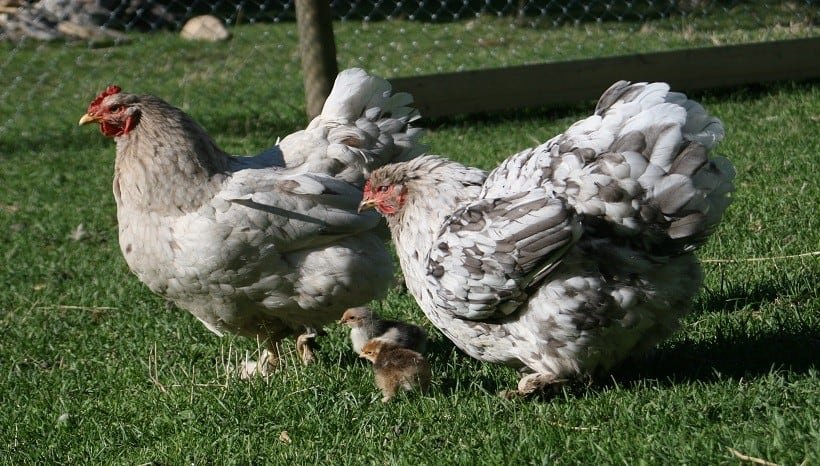
What are the Disadvantages of Having Cochin Chickens?
If you’re considering adding this chicken breed to the flock, you might want to know why keeping them might be a daunting task.
Here are some disadvantages of having Cochin Chickens
1. The feathers around their shanks tend to collect dirt:
During the rainy season, this can be really messy.
Keeping them in a dry area will solve this very issue.
2. Their feathers grow very slowly:
Although when fully grown, they have excessive feathers, the plumage or feathers of Cochin chickens tend to grow at a slow pace.
This leaves them naked for quite a while and exposes them to all kinds of harsh weather risks.
3. Cochins lay few eggs in a week:
The Cochin chickens are bad layers as they lay only about two eggs in a week.
4. The Cochin varieties of chicken are likely to get obese.
This is not good for egg-laying.
Little wonder they get to lay just two eggs a week.
Free-ranging helps to keep weight under control.
When chickens get obese, they are prone to many health issues.
So it is wise to keep them trim.
5. They easily become targets for predators:
Cochin chickens have the tendency of becoming lazy and obese.
As a result, they become easy targets for predators, since they may not have the energy to take a flight or fight back.
Frequently Asked Questions About Cochin Chickens
What is the lifespan of Cochin Chickens?
Cochins are known to live long. Usually, they live to about 5-8 years.
Largely, attaining this feat depends on how you take care of them.
All things being equal, they can live longer.
Are Cochin Chickens Good For Meat?
No, they are not.
The meat from Cochin Chickens tends to be coarse in texture.
Also, they are usually very dark after cooking.
But that doesn’t mean they can’t be eaten.
To get the best of meat from the Cochin Chickens, they’re best harvested at the age of 15–16 months.
Capons harvested at that time provide a good large table bird.
Can Cochin Chickens be trained as pets?
The fancy appearance of the Cochin breed makes them a perfect fit for a pet.
As long as you can carry their weight, you have a really trusted fluffy broody buddy for life.
The Cochin breed of chickens is loyal birds who love for real.
We can see that in its natural response to the hatching of the eggs of other birds.
Also, due to their fluffy large nature, they are good for cuddles, lapping and lovely chicken chases.
Are Cochin Chickens Good Egg Layers?
Aside from the pretty features of the Cochin Chicken breed, they are not good at laying eggs.
You don’t count on them to lay many eggs. Although, their eggs are large and tinted.
How Often do Cochin Chickens Lay Eggs?
Yes, they are good egg layers.
However, they do not get to lay many eggs. Usually, they’re known to lay 2 eggs per week.
That’s pretty poor for the egg selling Farmer.
But they’re consistent in laying the 2 eggs even in winter.
At best, you can call them moderate layers with an average of 150-180 per year.
What do Cochin Chickens eat to grow big?
Cochin Chicken don’t stick to any form of diet plan to grow fast.
Also, these sets of chickens are not easy pickers.
Therefore, any kinda food is welcome.
Allowing them to stay near feeds is all you need to have them grow big.
How fast do Cochin Chickens grow?
Due to their body naturally, they grow fast as meets the eye.
Basically, the roosters start growing their combs out around 4 weeks or thereabout.
After a few weeks, their comb will get redder and larger while the hens’ combs will stay small and light pink coloured.
At this point, you get to differentiate between the hen and the rooster.
In the 12th week, they are considered mature enough for meat.
Are Cochin Chickens noisy?
No.
The Cochin breed of chickens is not noisy fellows. Their large nature make them make “muffled sounds”
Although this doesn’t disturb the neighbours.
This trait makes them suitable for urban living
However, having them as pets can be a little boring.
Why?
Because they’re not great conversationalists.
What is the Habitat and Environment of Cochin Chickens?
A perfect habit for the Cochin breed is a dry environment. This would reduce the rate at which they carry dirt with their feathery legs.
Using sand in the run will be better for their feet.
Also, a low fenced pen is enough to keep them in confinement.
In addition, fewer bulbs and more shady covers will keep them well in winter.
But during summer, they will need a little light to keep warm.
Conclusion
The Cochin breed of chicken is a good addition to the farm. Although they’re healthy breeds, they need to be consistently treated for lice or mites at some point.
Due to their feathery nature.
Also, worms can be a threat. Constant clean will clear that up
We hope you find this piece enlightening.
Cheers to a successful rearing!!!
References:
- How To Care For Day-Old Chicks
- How Do Chickens Mate? A Detailed Explanation
- What is Bumblefoot in Chickens and How Do You Treat Them?
- Types of Poultry Housing and Poultry Housing Systems
- Newcastle Disease; Causes, Symptoms, Treatment and Prevention Tips
- Poultry Farm Equipment: All You Need to Start Poultry Farming
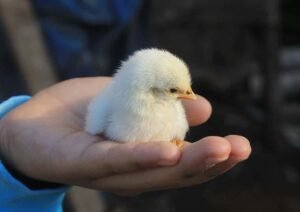
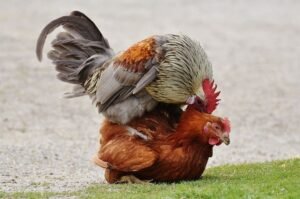
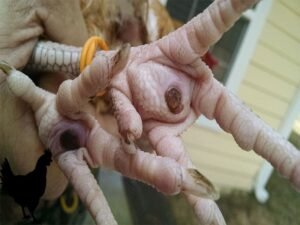



![Top 15 White Chicken Breeds [With Pictures and FAQs]](https://agro4africa.com/wp-content/uploads/2022/04/California-whitch-chicken-e1650462707336.jpg)
